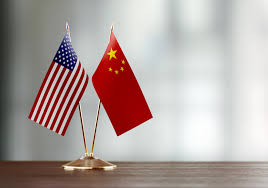On August 1 2019, US President Donald Trump, through his Twitter handle, announced that a 10% tariff will be applied to $300 billion of Chinese goods in addition to earlier tariffs.
China hit back by letting the yuan fall below the usual limit of 7 yuan per dollar, a move that targeted to reduce the dollar cost of Chinese exports, and raising the yuan prices of imports.
The retaliatory tariffs by China put U.S. exporters at a disadvantage because the tariffs reduced on all other exporters.
The trade war forced China to import soybeans from Brazil and other producers instead of the U.S. As that market disappeared, it hurt the United States more than China.
Trump, however, threatened a 10% tariff on Chinese electronics and clothing, which would kick off on December 15th 2019, so that the holiday shopping season would be plunged into a dark hole.
In general, the trade war reflects a loss in exports, reduced foreign investments, cautious approach by investors in both countries, etc.
The IMF, however, has warned that China’s growth could be cut rapidly if the U.S. tariffs are further increased.
Related:
Intra-regional Trade to Caution Africa From Global Tensions
US-Kenya agree on bolstering ties on trade & infrastructure



